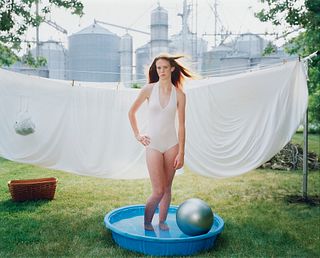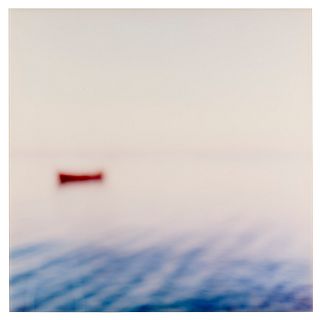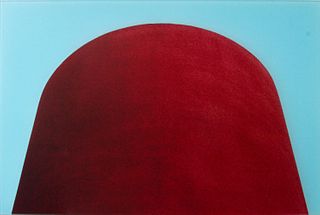517 Results
Sort by
-
 Estimate$3,500 - $4,500
Estimate$3,500 - $4,500 -
 Estimate$2,500 - $3,500
Estimate$2,500 - $3,500 -
 Estimate$10,000 - $20,000
Estimate$10,000 - $20,000 -
 Estimate$200 - $300
Estimate$200 - $300Terry Evans "The Edge of the Prairie" Chromogenic Color Print (1985)
Est.$200 - $30016 BidsSold for$800 -
 Estimate$200 - $300
Estimate$200 - $300Terry Evans "Kearney, Nebraska Airport" Chromogenic Color Print (1990)
Est.$200 - $3006 BidsSold for$225 -
 Estimate$200 - $400
Estimate$200 - $400 -
 Estimate$1,000 - $1,500
Estimate$1,000 - $1,500 -
 Estimate$150 - $250
Estimate$150 - $250Terry Evans "Terraced Plowing, Saline County, Kansas, 1990" C-Print
Est.$150 - $25010 BidsSold for$350 -
 Estimate$200 - $300
Estimate$200 - $300 -
 Estimate$3,000 - $5,000
Estimate$3,000 - $5,000 -
 Estimate$400 - $600
Estimate$400 - $600 -
 Estimate$3,000 - $5,000
Estimate$3,000 - $5,000 -
 Estimate$500 - $1,000
Estimate$500 - $1,000 -
 Estimate$3,000 - $6,000
Estimate$3,000 - $6,000 -
 Estimate$500 - $700
Estimate$500 - $700 -
 Estimate$750 - $1,500
Estimate$750 - $1,500 -
 Estimate$500 - $1,000
Estimate$500 - $1,000 -
 Estimate$1,500 - $3,000
Estimate$1,500 - $3,000 -
 Estimate$800 - $1,200
Estimate$800 - $1,200 -
 Estimate$1,000 - $1,500
Estimate$1,000 - $1,500Gregory Crewdson (b. 1962): Production Still (Library Street)
Est.$1,000 - $1,5004 BidsSold for$800 -
 Estimate$1,000 - $2,000
Estimate$1,000 - $2,000 -
 Estimate$1,000 - $2,000
Estimate$1,000 - $2,000 -
 Estimate$1,000 - $1,500
Estimate$1,000 - $1,500 -
 Estimate$800 - $1,200
Estimate$800 - $1,200 -
 Estimate$1,000 - $1,500
Estimate$1,000 - $1,500Simon Norfolk (b. 1963): The Granizal district of Medelin, Colombia, first populated by refugees (IDPs) 30 years ago
Est.$1,000 - $1,5002 BidsSold for$350



 EUR
EUR CAD
CAD AUD
AUD GBP
GBP MXN
MXN HKD
HKD CNY
CNY MYR
MYR SEK
SEK SGD
SGD CHF
CHF THB
THB Live Auction in Progress
Live Auction in Progress






















